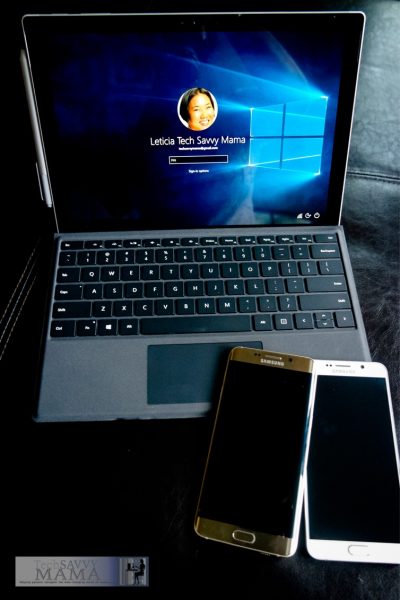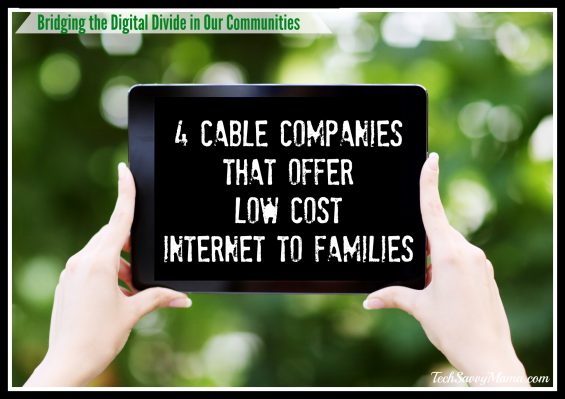
62 years ago on Tuesday, the Supreme Court declared that segregated schools are “inherently unequal” and unconstitutional in their ruling in Brown v. Board of Education and while it may seem that we have come a long way from schools that separated black students from white, there are still disparities in our education system and communities that prevent kids from having equal opportunities. Just this week On the anniversary of Brown v Board, new evidence that U.S. schools are resegregating was published in The Washington Post. Conversations at The Atlantic Live’s Education Summit, held at George Washington University, discussed how equitable doesn’t mean equal, it means fair.
But what is fair?
We live in a digital age and believe it or not, there are still many communities and families that lack access to the internet. This is called the Digital Divide.

From Indiana Public Media: http://indianapublicmedia.org/stateimpact/files/2011/10/DigitalDivide.png
You may have heard about the Digital Divide. Bridging the gap between individuals and communities that have access to these Information Age tools and those who don’t was a priority when President Bill Clinton was in office. The Clinton Administration created a comprehensive proposal to help bridge the Digital Divide, creating new opportunities for all Americans and ensuring that all children have access to educational technology.
The announcement of the Clinton Administration’s focus on the Digital Divide in 1999 came with incentives. $2 billion in tax incentives were slated to encourage private sector activities such as computer donations along with $380 million in new and expanded initiatives to build new public-private partnerships.
But where do we stand 17 years later?
According to Pew Research Center analysis of U.S. Census Bureau’s American Community Survey data, 5 million households with school-age children do not have high-speed internet service at home. Called “the homework gap,” Pew also found that low-income households – and especially black and Hispanic ones – make up a disproportionate share of that 5 million. Additional findings included:
Roughly one-third (31.4%) of households whose incomes fall below $50,000 and with children ages 6 to 17 do not have a high-speed internet connection at home. This low-income group makes up about 40% of all families with school-age children in the United States, according to the bureau’s American Community Survey.
The Digital Divide still exists.

I’m sitting in my home office connected to our secure wifi, writing this post on my laptop. Next to me, my phone buzzes with a push notification. An app that uses geolocation has picked up the location of my 12 year old daughter, Emily, to alert me that her bus has arrived at school. When Emily gets home, she’ll log into her Google Classroom account and collaborate on a debate assignment for English with her classmates. Her brother will do the same. Maybe using the same computer, or maybe another one in our home. When their homework is done and they’re winding down before dinner, both kids will probably consume video content either via Netflix Streaming or YouTube on their separate but equal internet connected devices.
We are lucky. While what goes on in our house may seem like the norm for the families we fraternize with, it’s not this way in the rest of the country or even outside our neighborhood.

When I began my career as a teacher in 1998, I taught first grade in a Title 1 school. Title 1 is a U.S. Department of Education designation for schools with a certain percentage of low income families, often qualifying for free and reduced school meals. Some of my students didn’t have books or materials at home to complete their homework, let alone computers that were connected to the internet. And while that was 18 years ago, there is still a digital divide that exists that leaves kids behind.
In February, The New York Times published Bridging a Digital Divide That Laves Schoolchildren Behind, an article that details the difficulties today’s students face without home internet service:
“I got it. I’m going to download,” Isabella said to her brother Tony as they connected to the school’s wireless hot spot and watched her teacher’s math guide slowly appear on the cracked screen of the family smartphone.
Isabella, 11, and Tony, 12, were outside the school because they have no Internet service at home — and connectivity is getting harder. With their mother, Maria, out of work for months and money coming only from their father, Isaias, who washes dishes, the family had cut back on almost everything, including their cellphone data plan.
So every weeknight, the siblings stood outside the low-slung school, sometimes for hours, to complete homework for the sixth grade.
“There’s just no funds left,” Maria Ruiz said later outside the family’s white clapboard rental home. “It worries me because it will become more important to have Internet when they have to do more homework.”
According to the New York Times’ article, “the federal government is now grappling with a stark disparity in access to technology, between students who have high-speed Internet at home and an estimated five million families who are without it and who are struggling to keep up. The challenge is felt across the nation.”

According to Cox Communications:
- Less than half of low-income K-12 students have broadband at home compared to more than 90 percent of higher-income families.
- Students with a PC and broadband at home have graduation rates that are 6-8% higher than similar students who don’t have home access to the Internet.
- 30% of all Americans – approximately 100 million people – risk becoming increasingly isolated from contemporary life because they lack the Internet service and the skills necessary to use it effectively.
The Digital Divide is real.
I am not writing this post to make you to feel guilty about the access you have versus another family’s lack of access. I’m writing it to inform you that there are resources that you can share with your community and schools to help ensure that we get families connected so all students have equal access to the internet and can use their digital literacy skills at school and at home.
Area cable companies are working to reduce the digital divide by providing low-cost internet options for families who need it the most. Here’s what you need to know about programs offered to residents living in areas serviced by Comcast, Cox Communications, AT&T, CenturyLink, and Bright House.
4 Cable Companies That Offer Low Cost Internet to Qualifying Families

Comcast Internet Essentials

Since 2011, Comcast has been helping to conquer the nation’s digital divide through their Internet Essentials program. For $9.95/month families can get affordable internet at home by completing an application either online for through the mail. There is no credit check, no term contract, no installation fee and includes 10Mbps and in home wifi.
Families can also purchase a desktop or laptop computer for $149.99 that comes with Microsoft Office, Norton Security Suite, and a 90 day warranty. To get a computer through the low-cost computer program, families apply for Internet Essentials first and once approved, call to select their computer that will be delivered to their home. Payment plans are available for the low-cost computer program. Applying for Comcast Internet Essentials must begin online. After completing the online application, they will send a copy in the mail to be completed and returned
Cox Connect2Compete

Acknowledged by President Obama for their commitment to closing the Digital Divide, Cox’s Connect2Compete provides eligible K-12 families who are eligible for the National Free School Lunch program, TANF and SNAP benefits with internet access.
Families with at least one child receiving free lunch are eligible to receive Internet services from Cox, at $9.95/month. There also are no activation fees or equipment rental fees associated with the high-speed Internet program. Over the past four years the program has existed, Cox has connected nearly 160,000 people to the Internet. Eligible families can apply online at www.connect2compete.org/Cox or by calling 855-222-3252. Connect2Compete is also for families who use Bright House Networks as their cable company.
AT&T Access

Like Comcast and Cox, AT&T offers low-cost wireline home Internet service to qualifying households starting at $5/month. This no commitment, no deposit, no installation fee program provides in-home wifi and access to the AT&T wifi Hot Spot network. To qualify, families must have at least one resident who participates in the U.S. Supplemental Nutrition Assistance Program (SNAP), an address in AT&T’s 21-state service area, at which we offer wireline home Internet service, and no outstanding debt for AT&T fixed Internet service within the last six months or outstanding debt incurred under this program. Eligible families can complete the online application or print and mail it. AT&T also provides the following phone numbers to call for assistance
- English- 855.220.5211
- Spanish- 855.220.5225
CenturyLink Internet Basics

CenturyLink provides internet service for $9.95/month for 12 months with a 12 month contract for those who:
- Reside where CenturyLink® offers Internet service
- Have not subscribed to CenturyLink Internet service and are not a current CenturyLink Internet customer
- Do not have an overdue CenturyLink bill or unreturned equipment
- Follow current guidelines for Lifeline/ TAP phone service programs
If you qualify for CenturyLink Internet Basics, you are also eligible to purchase an iPad mini 2 for $150 with a 2 year contract and service at the rate of $9.95/month for the first 12 months, and $14.95 for months 13-24. Download an application document (under Application Documents tab) for your state of residence or call: 1-800-257-3212
I attended a #ComcastConnects #XfinityMoms luncheon and received a tablet for my participation. In the past, I have worked with AT&T and served as Cox Communications’ Digital Correspondent for CES 2016 but all opinions are my own. Images courtesy of Comcast Internet Essentials and logos courtesy of aforementioned companies. No additional compensation was received.



Medicom has a stranglehold here in our town and many smaller towns are left wit spotty if any reliable internet. I hate to slam Mediacom, bt I remember when they came to town… we were their ‘test’ in Iowa and out internet was supposed to be a locked price, supposed to have all fiber optics and the schools were supposed to get it free. None of that has happened.
There is Century Link in our town, but where folks needing internet would have difficulties are in this category: Do not have an overdue CenturyLink bill or unreturned equipment
Follow current guidelines for Lifeline/ TAP phone service programs.
Many had landlines until the free cellphones were introduced (which is a lifesaver to many for jobs and such) and they cant have Lifeline on more than one thing meaning they would have to give up the cellphone in order to qualify.
AT&T looks good, but again , not all who are under the poverty level qualify for SNAP (food stamps) they are just above often by a few dollars .
I would love to one day see internet free to all as part of the infrastructure. I see my nieces struggling, as they dont have wifi, although will go to the library or to a fast food place to get the info they need, not the ideal situation, as they cant work on much.
The discount rates are a step forward, but only for areas that are already have broadband infrastructure. There’s a huge problem with lack of connectivity in rural areas. Their only access is usually through painfully slow satellite connections that have low data caps. Cable companies won’t run a broadband line into poor rural areas because they don’t believe they can recoup the expense. I understand their side, but we’ve come to a point that broadband access is no longer a luxury. It’s as essential as water and electricity and needs to be treated as such, just like telephone access in the 20th Century.